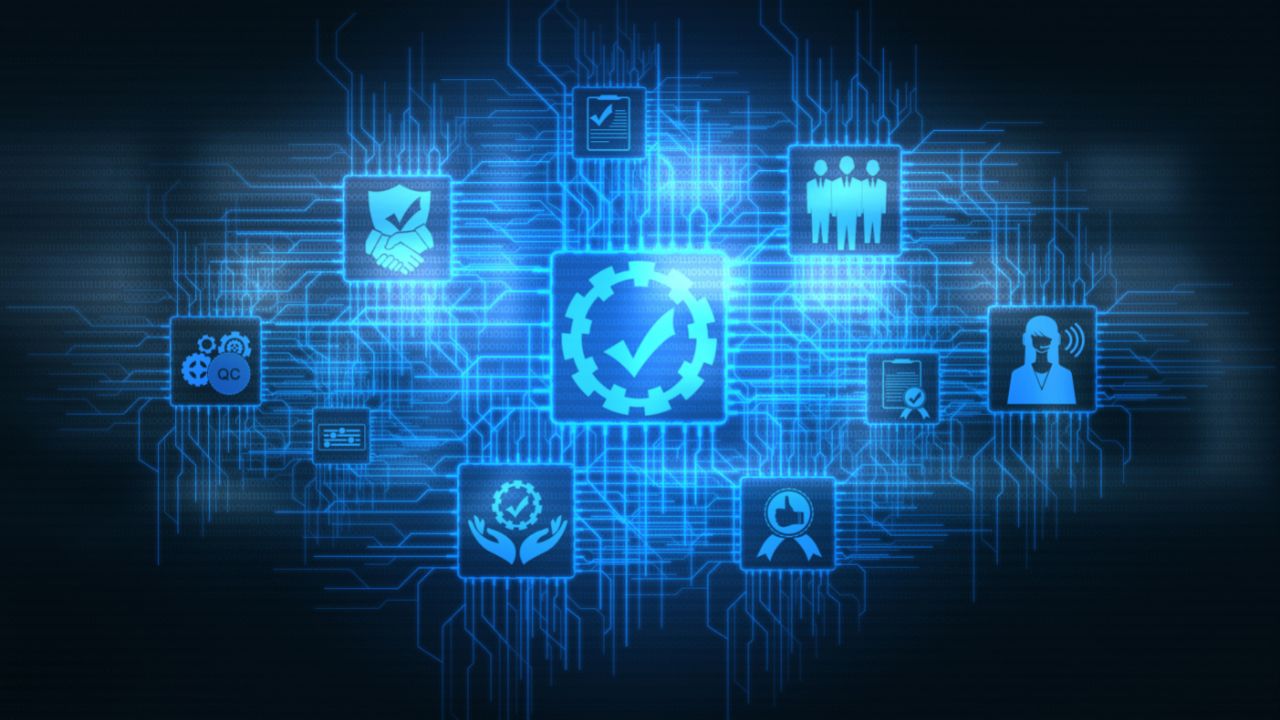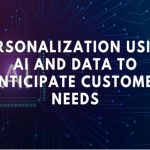 The market is still expanding due to the increased need for intelligent and automated solutions. The use of AI in quality control has significant potential. Manufacturers are using intelligent cameras to improve at costs, speeds, and latency that are superior to what human inspectors can accomplish.
The market is still expanding due to the increased need for intelligent and automated solutions. The use of AI in quality control has significant potential. Manufacturers are using intelligent cameras to improve at costs, speeds, and latency that are superior to what human inspectors can accomplish.
The industry must use AI-powered technology and machine vision in manufacturing. And quality control is the field in which AI is currently most widely used. In this post, let’s look at the overall perspective of AI in quality control.
Also read: Enhancing Customer Experience with AI: A Complete Guide
AI in Defect Detection
The technology required to conduct industrial operations efficiently has expanded along with manufacturing techniques and activities. One of the most effective manufacturing breakthroughs is AI defect detection. It replaces conventional visual inspection and fixes almost all of its issues. Businesses use cameras for various applications, including flaw identification in manufacturing, but AI and image analysis extends far beyond the camera. Every image data is collected during image processing and placed in a cloud database where dozens can examine it to hundreds of machine learning algorithms to identify flaws or fluctuations and offer course corrections.
When a product is ready for production, all potential flaws eliminate. After manufacturing the product, the AI-powered defect detection system continuously scans the production line to divert any more defective products to the appropriate region for repair.
Benefits of Using AI in QA and Testing
Processes for Quality Assurance have become more straightforward and effective thanks to AI. In QA, several AI methodologies and strategies are being used, such as increasing the focus on defect hubs, guaranteeing complete test coverage, and speeding up the distribution process to enable a shorter time to market. Here are some more advantages of AI for quality control.
Fast identification of material at risk
AI-powered systems can immediately identify a problem in any area of the production line being watched by cameras or sensors courtesy of computer vision and deep learning. In contrast to human inspection rates, AI systems can raise defect detection rates by as much as 90%. As opposed to manually checking for flaws, this allows engineers to spend their valuable time solving quality management problems.
Precise defect root-cause analysis
An AI-powered solution not only recognizes flaws but also identifies their underlying cause. If there are several failures, AI keeps track of their order. Perhaps better, AI-driven root-cause analysis reduces the likelihood of future production errors. Engineers can continuously increase yield and lower production faults since it reveals which value chain segments require improvements.
Production optimization
Manufacturing quality control using AI can choose the best circumstances for operation. Examining various manufacturing data may automatically identify the crucial elements for such settings. As a result, faults and product waste reduces
High scalability and easy integration
A single AI-powered solution is simple to deploy across various production sites. This implies that an engineer can rapidly advise another manufacturer of a problem developing in one production. An AI system can even combine data from many production sites to enhance forecasts. Additionally, a cutting-edge AI-driven solution can be integrated with the technologies and analysis tools already in use by a corporation.
Time-saving
An AI engine can complete product quality checks more quickly than a person. Complex tasks can be automated using it. Compared to manual quality testing, automated quality testing takes up fewer person-hours.
Also check: Boosting Efficiency: How AI Is Improving Business Process Automation
How AI is used in Defect Detection

With the use of AI-powered testing technologies and deep learning, testers can switch from the manual testing methods of the past to a continuous testing procedure that is automated and precise.
Here are some main advantages of implementing AI in QA and testing.
Expedited timelines
A group of programmers can hasten the creation of apps and software in various ways. One of them is including interruptions in the testing procedure. AI can quickly sort through log files, scan codes, and find mistakes instead of reading over thousands of lines of code. AI also provides better and far more accurate findings since burnout does not affect it.
Moreover, AI QA can develop when the code is changed. It can adjust, recognize new functions, and are trainable to determine whether something is a new feature or a problem resulting from a change in the code.
Well-researched build release
AI in QA enables AI development organizations to analyze related apps and software to ascertain what factors led to their market success. Studying the market’s needs may lead to creating new test cases that ensure the app or software will stay strong when achieving specific goals.
Effortless test planning
Testers can examine an app by crawling through each screen while using AI QA automation tools to create and test case scenarios for them, saving time on planning.
Expanded role of a tester
The introduction of artificial intelligence QA forces the teams of QA testers to learn new abilities. They must become more skilled in business analytics, numerical optimization, and neurolinguistic programming.
Predictive analysis
AI automation in quality assurance can evaluate and examine existing customers’ data to determine how users’ needs and browsing habits change. This enables testers, marketers, and developers to anticipate users’ standards as they develop and provide better help. The platform that uses AI and ML gets better with user behavior analysis and provides progressively more accurate projections.
Enhanced writing of test cases
Your automated test cases will be of higher quality thanks to AI. The technology provides realistic test cases that are convenient to use and simple to regulate. The developers cannot utilize the conventional approach to examine more potential test case scenarios. The developers can come up with fresh ideas for test cases because the project data analysis that happens with the aid of AI in quality control takes only a few seconds.
Improved regression testing
Regression testing is ever more necessary with fast deployment, and occasionally the testing is so intensive that it is almost impossible for workers to keep up. Businesses can employ AI to automate more time-consuming regression testing procedures and ML to generate test data.
Visual user interface testing
AI assists in improving the aesthetic approval of internet pages and user interface design. Through the Interface, AI may test various contents. Human input is frequently required to decide on the design of these tests, which are challenging to automate. In contrast, utilizing ML-based visualization tools, distinctions in images are seen in a way that is not feasible for individuals to notice.
Enhanced defect tracking
With traditional and manual testing, flaws and mistakes can be noticed for a very long time and eventually cause problems. Software testing with AI can automatically identify problems. As software expands, data grows as well, which leads to a rise in defects. AI swiftly and automatically detect these flaws, allowing the software design team to work without interruption. AI-based bug tracking recognizes failure fingerprints and detects duplicate problems.
You may also like: Transforming Customer Service with AI: A Beginner’s Guide
The Six Levels of AI QA Testing
Here are the six testing tiers so the AI testing trend won’t take you off guard.
Level zero:
Repetitive code writing is a requirement at this point. So, including a field on the page would also include a test. Adding any form to a page entails adding a test that verifies every area. Also, adding a page necessitates running every one of the forms’ elements through a fresh set of tests.
You will likely only partially ensure the program’s functionality increases as the number of tests grows. It would be best to look through all the failed tests to determine whether anything is a problem or a new baseline.
Level one:
At this point, your QA will become more autonomous the better the AI is integrated into your application. AI should consider both the visual representation of the page and the underlying Document Object Model. Once the testing framework views the page, you can write checks you would have usually had to write by hand.
By writing the checks, modern AI technologies can assist you in writing test code. They can also determine whether a test is successful. If it crashes, it will let you know so you can decide if the failure occurred or whether a software update caused it.
Level two:
Level 1 would spare the QA professional from having to write checks, which takes time. You may also utilize AI to assess the page’s aesthetic components. Checking each test failure, however, is a time-consuming operation.
At this level, your AI can distinguish between differences using language that app users can understand. Because it understands the changes from other sites semantically, it can group them.
In Level 2, AI can inform the tester when two modifications are identical and prompt acceptance or rejection of the changes collectively.
Level three:
AI performs the task of validating each change or failure discovered in the app at Level 3. This level of AI can analyze pages without the assistance of a person by merely comprehending the data and design principles. It examines hundreds of outcomes and tracks changes over time. Then, using machine learning, it can recognize distinctions in changes.
Level four:
In Level 4, AI would take control of the testing process. Level 4 AI can also conduct the tests because it can analyze software or apps on a semantic level and comprehend them similarly to humans. This AI will be able to understand the website and user flow, visualize user interactions over time, and track user behavior
Level five:
For now, this level is still science fiction. At this level, the AI would have the capacity to communicate with the product manager, comprehend the application, and comprehensively conduct the tests on its own.
Yet, AI-5 would need to be far more intelligent than humans considering that nobody has ever been able to comprehend a product manager’s description of an application. While AI is currently at Level 1, various automation processes, such as visual UI testing, API testing, robotic quality assurance and running tests, and spidering, already use AI.
What is the future of QA with AI?
Over time, AI’s roles in QA testing will only increase. Modern developers are undoubtedly attempting to close the gap between hype and reality through numerous digital transformations in testing. It is safe to claim that AI will play an increasingly important role in QA testing in the future.
Although AI has dramatically refined and improved the overall process, it is still far from replacing QA testing. Today’s technology helps speed up tests, improve accuracy, and save a lot of money for developers. AI-powered solutions, however, are only as intelligent and efficient as the data at hand. Hence, while we concentrate on using AI in QA testing, fostering a more data-driven approach to testing is crucial.
What is the future of artificial intelligence in manufacturing industries?
Artificial intelligence has a bright and exciting future in the manufacturing process sector. Compared to their rivals, manufacturing organizations that adopted AI, ML and deep learning models early on as a component of their digital transition now find themselves in a favorable situation. These organizations adopted the critical innovations of the fourth Industrial Revolution, such as automation, robotics, big data, predictive analytics, artificial intelligence, and machine learning. As a result, they experienced significant reductions in production costs and gains in operational effectiveness.
Impact of AI on the Future of Work
Ongoing application of AI in businesses raises the possibility of successfully marketing an entire work process to a company in the future. Everything from software to actual factory machinery, the digital counterpart of the machinery, the ordering system that communicates with the firm’s supply-chain systems, and analytics to track production processes and gather data as inputs pass through the system could be included.
The potential for artificial intelligence to greatly boost workplace efficiency and broaden the spectrum of jobs that individuals are capable of is enormous. The human workforce may now focus on activities for which they are better qualified, such as those requiring creativity and empathy, while AI replaces laborious or dangerous tasks.





